#sana na n'hada
Explore tagged Tumblr posts
Text
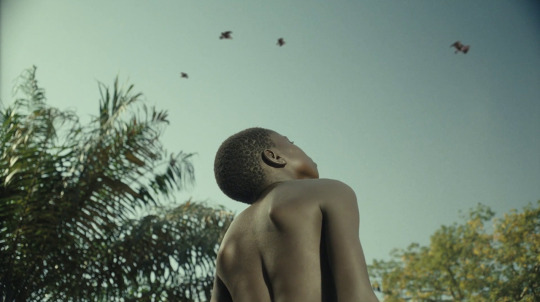
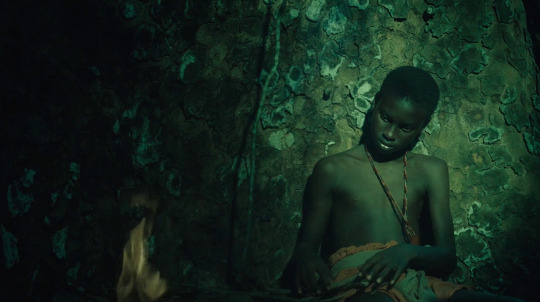
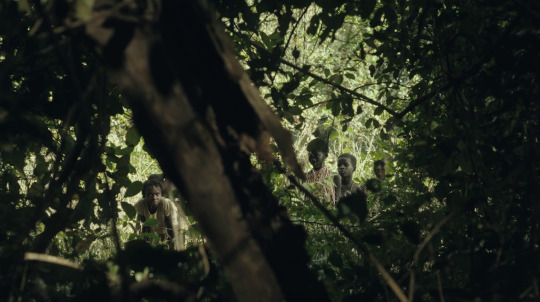
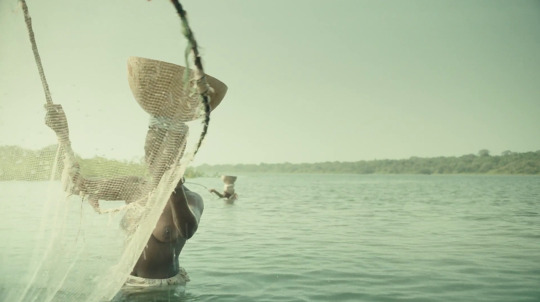

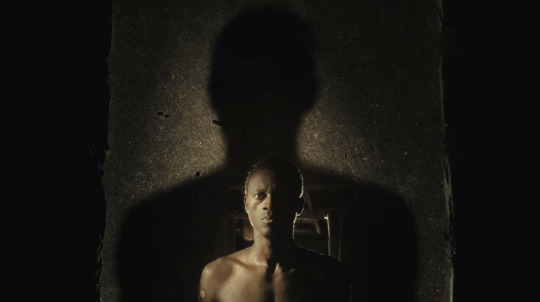
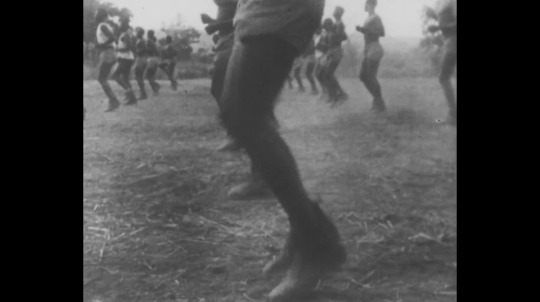

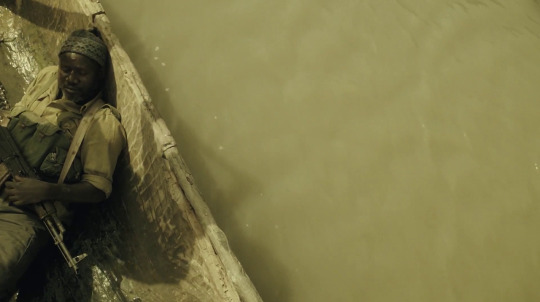


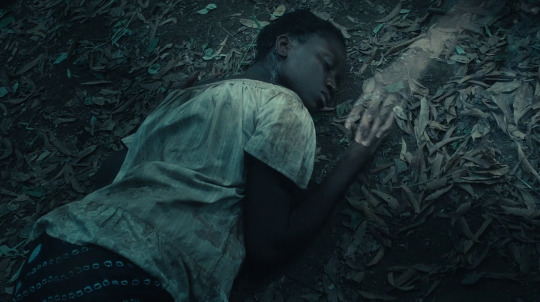



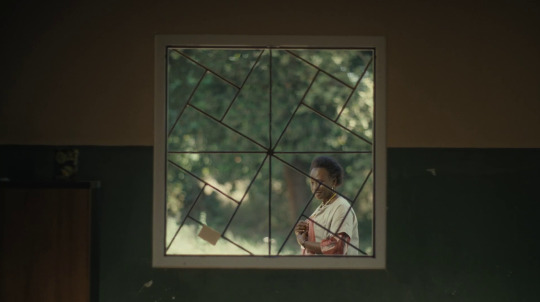

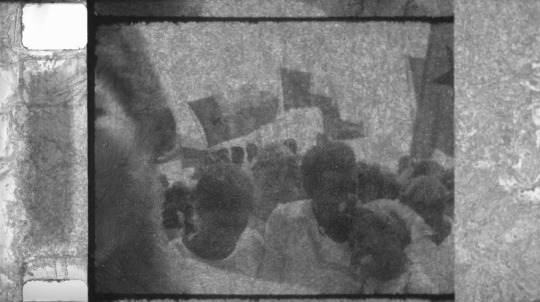
Nome (2023, Guinea-Bissau 🇬🇼) directed by Sana Na N'Hada
Nome is a film over 50 years in the making. In the late 60s, revolutionary Bissau-Guinean Marxist leader Amílcar Cabral sent filmmakers Sana na N’Hada, Flora Gomes, Josefina Lopes Crato and José Bolama to Cuba. To help change international public opinion against the Portuguese colonial regime, they returned to the country to document the struggle. This archive footage forms the basis for the fiction Nome, N’hada following its eponymous character as he joins the resistance movement. The story takes place in Guinea-Bissau in 1969, during the war of independence between the Portuguese colonial army and the guerrillas of the African Party for the Independence of Guinea. The protagonist, Nome, leaves his village and joins the ranks of the guerrillas. After years of struggle, he returns to his village as a hero. However, the initial joy soon gives way to bitterness and cynicism. (source)
#nome 2023#sana na n'hada#sana na nhada#guinea bissau#world cinema#cinema#screencaps#dailyworldcinema
584 notes
·
View notes
Text

Nome, Sana Na N'Hada (2023)
#Sana Na N'Hada#Virgílio Almeida#Olivier Marboeuf#Marcelino António Ingira#Binete Undonque#João Ribeiro#2023
1 note
·
View note
Photo

“Spell Reel” (2017) by Filipa Cesar
Film screening curated by Marianna Liosi, accompanied by a critical text (Engl/Span)
14th May 2018, at INSTAR, Tejadillo N. 214, Habana Vieja
#00 Bienal de la Habana, 5–15 May 2018, Havana, Cuba
Spell Reel: a filmed political essay about everyday resistance
by Marianna Liosi
(English version)
It can become an obsession for us to want to control the image that one day we produced accidentally, saying 'that's for history'. [...] Yet the image gives itself a new life, a new destiny, with or without us. It frees itself of our guardianship.
—Sana na N'Hada, Our image and ourselves, 2015
Independent from their producer, images want to be free, to transform, and to live. They ask us as viewers to make it happen. How do we come together with them? From Cuba in 1967 to Guinea-Bissau, through Berlin and across countless villages and towns, peninsulas and islands, all over the globe, until today, the footage composing the film project Spell Reel (2017) by artist Filipa César has struggled to exist across chronicles and continents.
As claimed by Sana Na N’Hada, “In war, the enemy shoots the person with a camera before the person with the gun”.
Spell Reel is a resisting film, because of its object. It is the discovery and rescue of a minor and damaged part of a much wider archive of film footage shot by revolutionary filmmakers from Guinea-Bissau, which include Sana Na N’Hada, Flora Gomes, José Bolama Cobumba, and Josefina Crato. These filmmakers studied cinema at the Cuban Institute of Cinematographic Art and Industry, and at the directive of Guinea- Bissau’s Amilcar Cabral, documented the struggle for the liberation of the state from Portuguese domination (1963–74). This is the key event that initiated the long term research project and archival work titled “Luta ca cada inda” (The struggle is not over yet), a project initiated by Filipa César and developed in collaboration with the abovementioned filmmakers and various co-authors.
Spell Reel is a resisting film because of its perspective. Taking inspiration from the gaps (missing footage and sound) in the invaluable cinematic materials found, and by not attempting to fill them, César approaches with a sensitive touch the past and historical background of the films and their authors, which she interweaves with the present. Creating a dialogue between the archival footage and the communities that the images have unconsciously fostered, she engages a process for the construction of collective memories. Spell Reel is an invitation to look also at these voids as a place for the creation of new stories, and as viewers, a call to engage and write our own history.
Spell Reel is a resisting film because of its form, and montage is at the core of it: black and white footage, upside down or damaged, juxtapositions with contemporary shots, and poetic commentary all echo aesthetically a non-linear way of seeing and thinking. This use of montage also mirrors the experience by César of confrontating and manipulating together with many collaborators the found reels, first in Guinea- Bissau and then in Berlin, where they were digitized. Selecting, re-using incomplete and unstable reels, revisiting, and editing them, César stretches to the extreme the possibilities of a found repository. As well, out of its fragments, she creates an expanded and endless archive.
Spell Reel is a film born by encounters: by César, the revolutionary filmmakers, and all the people with whom they have collaborated. César’s film also proactively traces trajectories of engagement and viewing, as for instance, among the Guinean community: the archival films and their authors were largely unknown until their public screening by means of mobile cinema. This format is a cultural method that was already used in Cuba after the revolution of 1959, as a way of engaging and educating citizens in the countryside, and in turn, a legacy of Russian agit-prop trains used in the 1917 Revolution through to 1935.
Furthermore, Spell Reel generates further encounters in its movement between places. It connects the Guinean community with the Cuban one, where spectators from both countries watch juxtaposed visual testimonies from their respective histories, which carry a great political and social value of solidarity between two distant geographies. And finally, it has bonded viewers around the world to a story of discovery, loss, freedom, solidarity, and struggle, which expands across time, place, and people. Through watching Spell Reel, we do not relive any past; instead, we are drafting our future.
(Spanish version)
Spell Reel: un ensayo político filmado sobre resistencia cotidiana
by Marianna Liosi
Translation by Francesca Boenzi
Puede convertirse en una obsesión para nosotros querer controlar la imagen que un día produjimos accidentalmente, diciendo 'eso es para la historia'. [...] Sin embargo, la imagen da a sí misma una nueva vida, un nuevo destino, con o sin nosotros. Se libera de nuestra tutela. -Sana na N'Hada, Nuestra imagen y nosotros mismos, 2015
Independientes de su productor, las imágenes quieren ser libres, transformarse y vivir. Nos piden como espectadores para que esto suceda ¿Cómo nos unimos a ellas? Desde Cuba en 1967 hasta Guinea-Bissau, pasando por Berlín y a lo largo de innumerables pueblos y ciudades, penínsulas e islas, en todo el mundo, hasta el día de hoy, el metraje que compone el proyecto Spell Reel (2017) de la artista Filipa César ha tenido dificultades para existir a través de crónicas y continentes. Como afirma Sana Na N'Hada, "En la guerra, el enemigo dispara a la persona que lleva una cámara antes de la persona con la pistola".
Spell Reel es una película resistente, debido a su objeto. Es el descubrimiento y rescate de una parte pequeña y dañada de un archivo mucho más amplio de metrajes filmados por cineastas revolucionarios de Guinea-Bissau, que incluyen a Sana Na N'Hada, Flora Gomes, José Bolama Cobumba y Josefina Crato. Estos cineastas estudiaron cine en el Instituto Cubano de Arte e Industria Cinematográficos, y bajo la dirección de Amilcar Cabral de Guinea-Bissau, documentaron la lucha por la liberación del Estado desde la dominación portuguesa (1963-74). Este es el evento clave que inició el proyecto de investigación a largo plazo y el trabajo de archivo titulado "Luta ca cada inda (La lucha aún no ha terminado)", un proyecto iniciado por Filipa César y desarrollado en colaboración con los cineastas mencionados anteriormente y varios coautores.
Spell Reel es una película resistente debido a su perspectiva. Inspirándose en las lagunas existentes (metraje y sonido perdidos) en los invaluables materiales cinematográficos encontrados, y al no intentar llenarlas, César aborda con un toque sensible el pasado y el contexto histórico de las películas y sus autores, entrelazándoles con el presente. Creando un diálogo entre el metraje de archivo y las comunidades que las imágenes han fomentado inconscientemente, la artista se involucra en un proceso para la construcción de memorias colectivas. Spell Reel es una invitación a ver también estos vacíos como un lugar para la creación de nuevas historias, y una llamada a nosotros como espectadores, para participar y escribir nuestra propia historia.
Spell Reel es una película resistente debido a su forma, y el montaje es su núcleo: imágenes en blanco y negro, dañadas o montadas al revés, yuxtaposiciones con tomas contemporáneas y comentarios poéticos, todo evoca estéticamente una forma no lineal de ver y pensar . Este uso del montaje también refleja la experiencia de César de confrontar y manipular junto con muchos colaboradores los carretes encontrados, primero en Guinea-Bissau y luego en Berlín, donde fueron digitalizados. Al seleccionar, reutilizar los carretes incompletos e inestables, revisarlos y editarlos, César extiende al extremo las posibilidades de un repositorio encontrado. Además, a partir de sus fragmentos, ella crea un archivo expandido e interminable.
Spell Reel es una película que nace de encuentros: por la misma César, los cineastas revolucionarios y todas las personas con las que ellos han colaborado. La película de César también rastrea de manera proactiva las trayectorias de participación y visualización, por ejemplo, entre la comunidad guineana: las películas de archivo y sus autores fueron en gran medida desconocidos hasta su proyección pública a través del cine móvil. Este formato es un estrategia cultural que ya se usó en Cuba después de la revolución de 1959, como una forma de involucrar y educar a los campesinos y, a su vez, un legado de los trenes agit-prop rusos utilizados en la Revolución de 1917 hasta 1935 .
Además, Spell Reel genera aun más encuentros en su movimiento entre lugares. Conecta la comunidad guineana con la cubana, donde espectadores de ambos países miran testimonios visuales yuxtapuestos de sus respectivas historias, que conllevan un gran valor político y social de solidaridad entre dos geografías lejanas. Y, por último, ha unido a los espectadores de todo el mundo a una historia de descubrimiento, pérdida, libertad, solidaridad y lucha, que se expande a través del tiempo, el lugar y la gente.
Al mirar Spell Reel, no revivimos ningún pasado; en cambio, estamos redactando nuestro futuro.
0 notes
Text
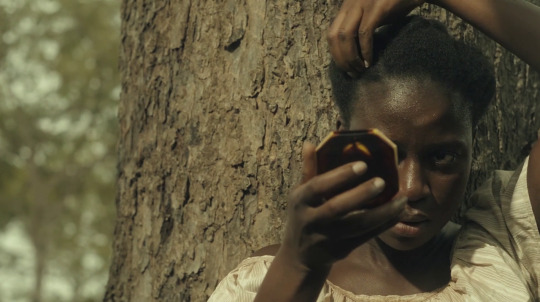

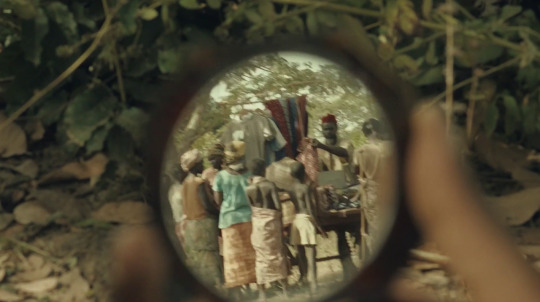



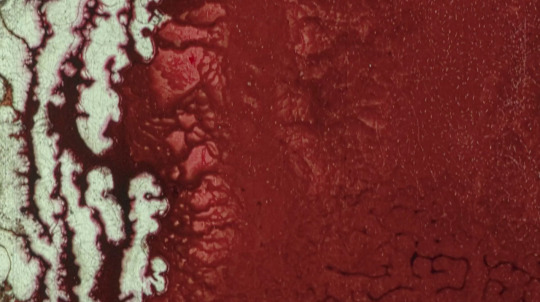

Nome (2023, Guinea-Bissau 🇬🇼) directed by Sana Na N'Hada
62 notes
·
View notes
Text

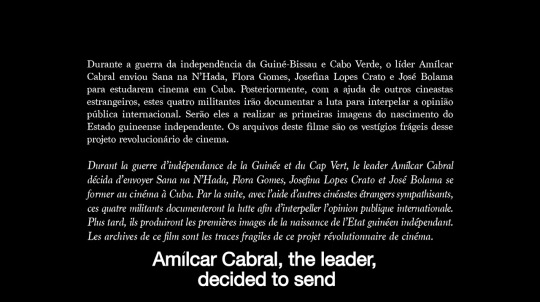







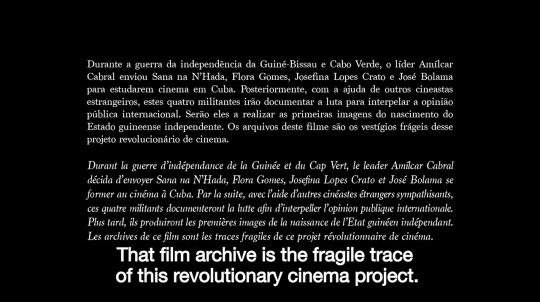
Nome (2023, Guinea-Bissau 🇬🇼) directed by Sana Na N'Hada
19 notes
·
View notes

